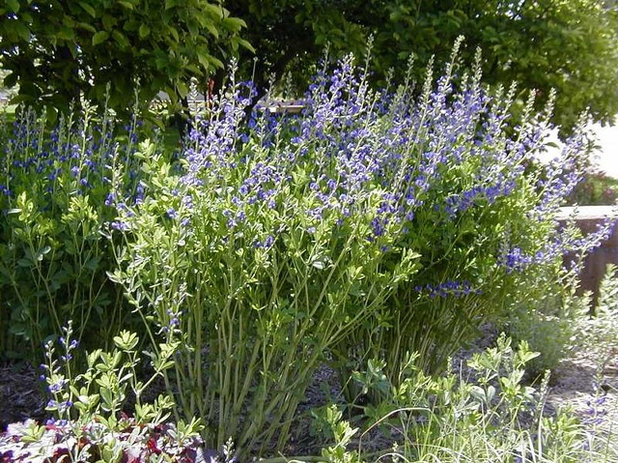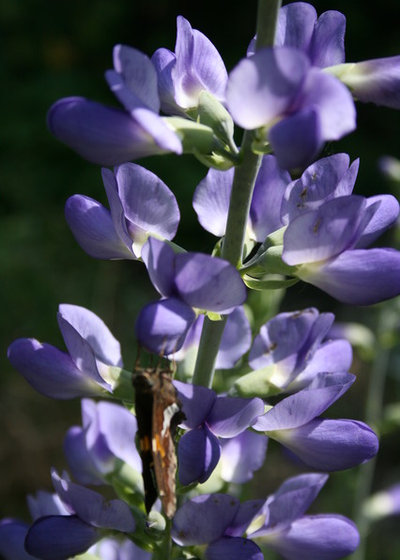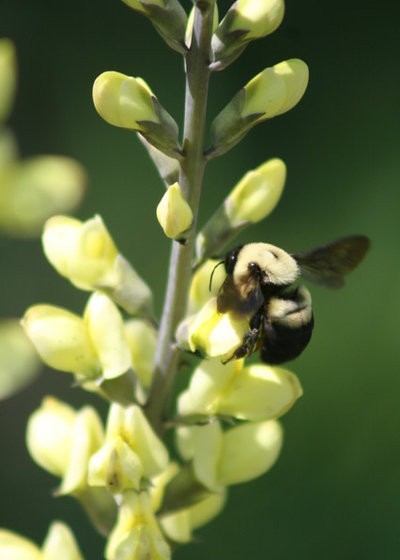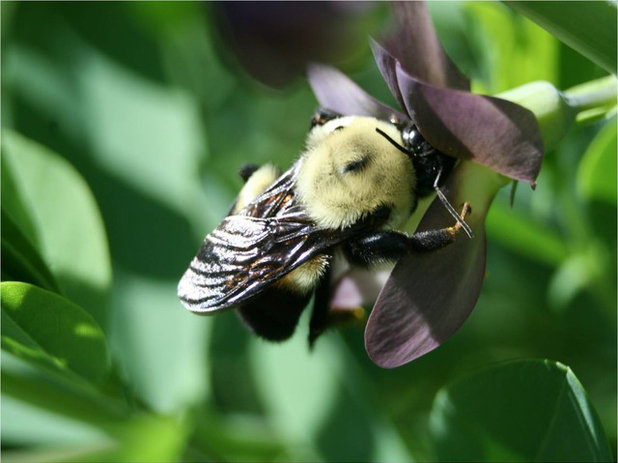You want a shrub in that dry corner, but no shrub will work. You want something that looks different. You want superlow maintenance. I've got just the right perennial for you: Baptisia is a quick-growing, uniquely blooming wildflower native to areas from the U.S. Central Plains to the East Coast. It does the work of a shrub but usually requires less water.

Missouri Botanical Garden
Botanical name: Baptisia australisCommon names: Blue wild indigo, wild blue indigo
Origin: Native in areas from the central Great Plains to the southeast and northeast U.S.
USDA zones: 3 to 9 (find your zone)
Water requirement: Medium to dry clay, sand
Light requirement: Full to partial sun
Mature size: 3 to 4 feet tall and wide
Benefits and tolerances: Easy perennial; drought tolerant; offers winter interest; attracts native bees
Seasonal interest: Good two-week bloom period in spring, followed by ornamental seed bombs that make a rattling sound
When to plant: Spring to fall

Benjamin Vogt / Monarch Gardens
Distinguishing traits. Spikes of pastel blooms in mid to late May attract beneficial native bees (which are better pollinators than honeybees). In spring the emerging spikes look like asparagus, and in fall the seedpods are both ornamental and rattle gently for added sensory interest. Baptisia's size makes it similar to a shrub, but it has the quick growth of a perennial flower.

Benjamin Vogt / Monarch Gardens
How to use it. Use Baptisia for height and as a filler in the back or middle of a dry border, en masse, in groups of three or as single accents.
'Carolina Moonlight' (shown) is a lemon-colored cultivar that performs just as well as the species plant. There's also
Baptisia australis var
minor, which is a shorter variety that grows to about 2 feet tall and wide, and blooms purple like the species.

Benjamin Vogt / Monarch Gardens
Planting notes. Wherever you place Baptisia, make sure that's the final spot where you want it. Baptisia takes a few years to bloom, and it has a deep taproot (making it very drought tolerant), so it responds poorly to being moved.
'Twilight Prairieblues' (shown) is another cultivar with dusky purple petals and a yellow base. Its leaves tend to be a smokier blue than the greener species plant.
More flowers to attract birds, bees and butterflies





